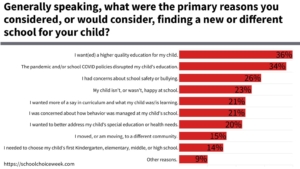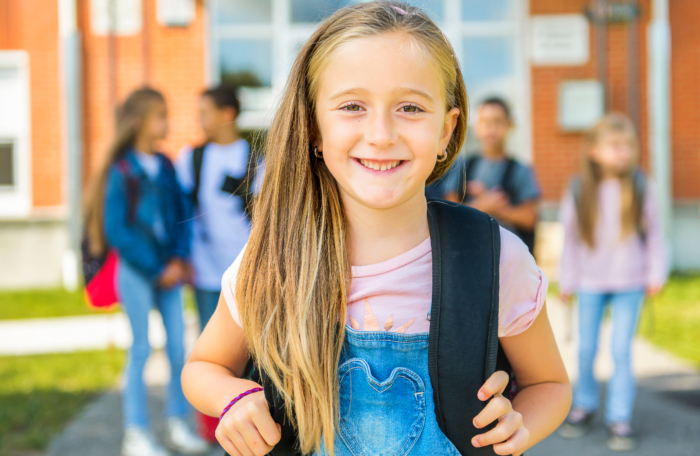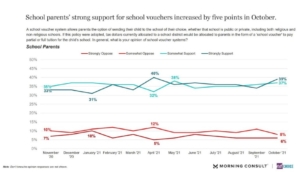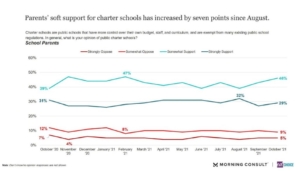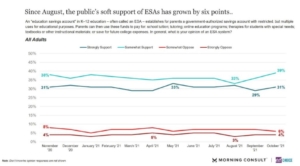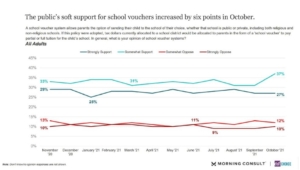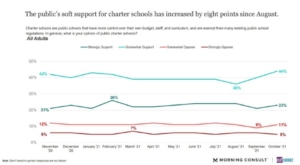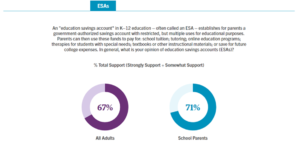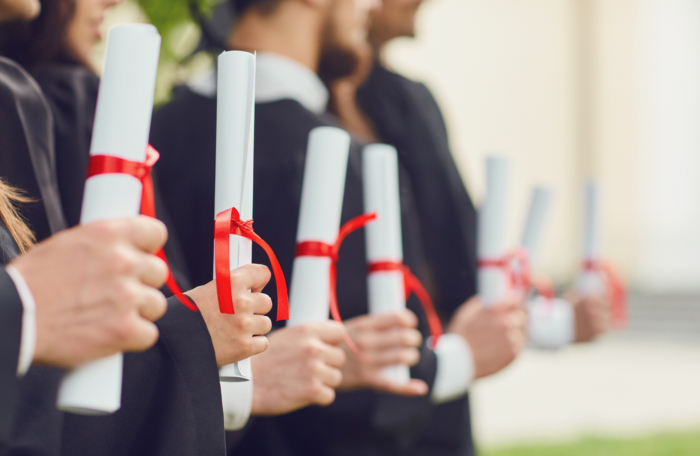A college degree is a major investment in a better economic future, high school students are constantly told. But that isn’t always true. More than a quarter of college majors produce a negative return on investment, according to a study by Preston Cooper at the Foundation for Research on Economic Opportunity.
A lot of studies have shown that STEM and business degrees pay better over a career than degrees such as psychology and education. (Here’s one Georgetown University did a few years ago.)
Cooper’s study adds real value to the debate by ranking degrees based on the financial return on the student’s investment, not just lifetime earnings. Many studies simply point out that earning a degree leads to X average lifetime earnings. But getting the degree is costly, and that includes opportunity costs (foregone earnings while in school and in a career that didn’t require a college degree). Those costs have to be subtracted from the future earnings to get an accurate understanding of a degree’s value.
Cooper also creates a searchable database that lets students compare nearly 30,000 degree programs at 1,775 colleges and universities. There’s a real difference in value not just among degrees, but among the same degree at different institutions, and this study explores that in detail.
“The analysis reveals that a student’s choice of program is perhaps the most important financial decision he or she will ever make,” Cooper writes. “Most bachelor’s degree programs in engineering, computer science, economics, and nursing increase lifetime earnings by $500,000 or more, even after subtracting the costs of college. But most programs in fields such as art, music, philosophy, religion, and psychology leave students financially worse off than if they had never gone to college at all.”
Among the findings:
- For students who graduate on time, the median bachelor’s degree has a net ROI of $306,000. But some degrees are worth millions of dollars, while others have no net financial value at all.
- After accounting for the risk of dropping out, ROI for the median bachelor’s degree drops to $129,000. Over a quarter of programs have negative ROI.
- College rankings like the U.S. News and World Report emphasize choice of institution. But from a financial perspective, choice of major is the more important consideration. Major alone explains nearly half the variation in ROI. Students will have a much greater chance of financial success if they study engineering, computer science, nursing, or economics, rather than art, music, religion, psychology, or education.
- Thirty-seven percent of programs do not deliver a financial return when adjusting for spending and completion. Another 32% have a lifetime ROI below $250,000.
- Assuming students graduate in four years, 16% of college degrees have a negative return on investment. But many students take five or six years to graduate. Adjusting for actual completion times, 28% of degrees are found to have a negative return.
- Programs at the most expensive schools (those with net tuition above $12,700) have a median completion-adjusted ROI of $198,000, compared to $129,000 for all programs. On average, the higher payoff from more expensive schools is enough to make the heftier tuition bill worth it.
- Though elite colleges dominate the list of top programs in the country, attending an elite school is no golden ticket. Over 100 programs at colleges with an acceptance rate below 20% have negative ROI. Several U.S. News juggernauts such as Harvard, Penn, and Chicago all offer at least one program that leaves its students financially worse off.
- At Harvard University, students who major in ethnic and gender studies can expect an ROI of negative $47,000. The film and photographic arts program at the University of Pennsylvania has an ROI of negative $140,000. Seventeen different programs at New York University have negative ROI, with the worst among them (music) leaving students over $500,000 in the hole.
Another blow to the argument for “free college”
The study’s findings can be added to the list of reasons why “free college” for all is a bad idea.
First, most degrees pay for themselves many times over, so there’s no need for the government to subsidize them.
One might argue that the government should subsidize degrees such as psychology and education that produce a low or even negative financial return because they are valuable to society as a whole.
But that assumes that the content of those programs is inherently valuable, when it might be the case that the programs struggle to produce larger returns because they are poor programs.
The study finds that some education and psychology degrees produce large returns, though the median program produces poor returns. That suggests that some programs are of much higher quality than others. Subsidizing all degrees in a particular field would provide taxpayer support for mediocre and poor programs, preventing market incentives from improving those programs.
A better option would be to provide prospective students with data on long-term earnings for various programs. Over time, that would lead to improvements in the lower-performing programs, whereas government subsidies would provide those programs with steady cashflows regardless of their performance.
A quick look at UNH
How does the University of New Hampshire stack up? Here’s a look at two majors, Animal Sciences and Business Administration. UNH generally ranks well on longer-term earnings vs. other public universities in the region.
The median earnings for an Animal Sciences major at age 45 are $64,076 at UNH, $54,423 at the University of Connecticut, $53,112 at the University of Rhode Island, $54,643 at the University of Vermont, $61,251 at the University of Maine, and $55,160 at UMass-Amherst. (But they’re $88,314 at Auburn University.)
The median earnings for a Business Administration major at age 45 are $101,903 at UNH, $124,785 at Boston University, $88,364 at Granite State College, $74,587 at Keene State College, $77,070 at New England College, $112,671 at New England College of Business and Finance, $100,237 at New England Institute of Technology, $131,372 at Northeastern University, $74,488 at Plymouth State University, $97,549 at Southern New Hampshire University, $85,514 at Suffolk University, $101,943 at the University of Connecticut, $72,660 at the University of Maine, $78,154 at the University of Hartford, $108,619 at UMass-Amherst, $73,692 at the University of New England, $95,622 at the University of Rhode Island, and $92,148 at the University of Vermont.
Below are the earnings at ages 25, 35, and 45 for all UNH majors covered in the study.
You can search the database here (about halfway down the page).
| University of New Hampshire-Main Campus |
Agricultural Production Operations. |
$27,322 |
$36,157 |
$40,217 |
| University of New Hampshire-Main Campus |
Animal Sciences. |
$30,783 |
$53,826 |
$64,076 |
| University of New Hampshire-Main Campus |
Anthropology. |
$26,498 |
$45,574 |
$50,798 |
| University of New Hampshire-Main Campus |
Biochemistry, Biophysics and Molecular Biology. |
$44,520 |
$91,483 |
$106,677 |
| University of New Hampshire-Main Campus |
Biological and Biomedical Sciences, Other. |
$36,109 |
$65,240 |
$69,686 |
| University of New Hampshire-Main Campus |
Biology, General. |
$39,139 |
$79,726 |
$90,553 |
| University of New Hampshire-Main Campus |
Business Administration, Management and Operations. |
$53,050 |
$90,855 |
$101,903 |
| University of New Hampshire-Main Campus |
Chemical Engineering. |
$66,348 |
$96,549 |
$119,263 |
| University of New Hampshire-Main Campus |
Chemistry. |
$43,960 |
$79,179 |
$93,577 |
| University of New Hampshire-Main Campus |
Civil Engineering. |
$58,541 |
$93,959 |
$110,601 |
| University of New Hampshire-Main Campus |
Communication and Media Studies. |
$43,363 |
$80,693 |
$86,509 |
| University of New Hampshire-Main Campus |
Communication Disorders Sciences and Services. |
$20,388 |
$28,216 |
$31,515 |
| University of New Hampshire-Main Campus |
Computer and Information Sciences, General. |
$73,098 |
$118,834 |
$138,388 |
| University of New Hampshire-Main Campus |
Computer Engineering. |
$71,595 |
$122,339 |
$132,446 |
| University of New Hampshire-Main Campus |
Criminology. |
$36,490 |
$59,905 |
$66,479 |
| University of New Hampshire-Main Campus |
Drama/Theatre Arts and Stagecraft. |
$27,227 |
$47,367 |
$54,268 |
| University of New Hampshire-Main Campus |
Economics. |
$49,684 |
$83,330 |
$89,508 |
| University of New Hampshire-Main Campus |
Electrical, Electronics and Communications Engineering. |
$69,454 |
$112,119 |
$132,842 |
| University of New Hampshire-Main Campus |
English Language and Literature, General. |
$30,296 |
$51,041 |
$56,630 |
| University of New Hampshire-Main Campus |
Environmental/Environmental Health Engineering. |
$52,699 |
$82,893 |
$109,012 |
| University of New Hampshire-Main Campus |
Ethnic, Cultural Minority, Gender, and Group Studies. |
$27,826 |
$48,179 |
$49,207 |
| University of New Hampshire-Main Campus |
Fine and Studio Arts. |
$24,571 |
$38,649 |
$40,419 |
| University of New Hampshire-Main Campus |
Genetics. |
$44,431 |
$86,481 |
$99,976 |
| University of New Hampshire-Main Campus |
Geography and Cartography. |
$28,950 |
$46,774 |
$51,320 |
| University of New Hampshire-Main Campus |
Health and Medical Administrative Services. |
$50,711 |
$77,632 |
$93,663 |



